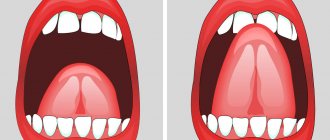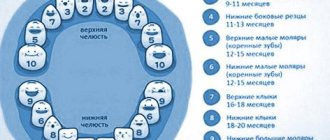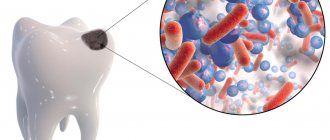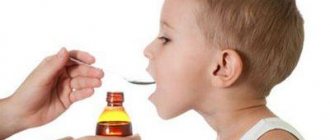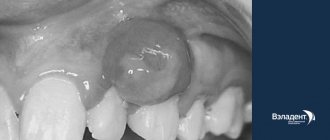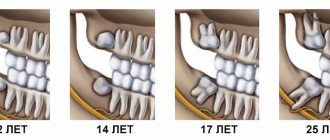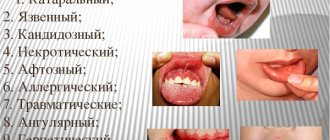Pneumonia or pneumonia is a viral disease that affects the lung tissue and interferes with the normal exchange of oxygen between air and blood. Inflammatory secretions that enter the alveoli do not allow the body to receive a sufficient amount of oxygen. And if the disease affects most of the lungs, acute respiratory failure develops.
Pneumonia affects people with weak immune systems, children and the elderly. Every year in Russia alone, 1.5 million people suffer from the disease, and 30% of them are young children and people over 70 years of age.
But pneumonia can and should be treated! And it is recommended to do this using an integrated approach. Treatment of any disease begins with a correct diagnosis. Therefore, at the first signs of the development of pathology, seek the advice of a specialist.
What are the first symptoms of pneumonia, how to approach treatment correctly and comprehensively, and what is required to diagnose the disease, we will tell you in this article.
Causes of pneumonia
Pneumonia develops when bacteria and viruses, as well as foreign agents, enter the lungs and affect part or all of the lung tissue. Pathological agents enter the human body through the respiratory route, and rarely through the blood.
Why does the disease develop quickly in the body of a person with reduced immunity? Bacteria are constantly present in our body, but protective mechanisms do not allow them to multiply, causing pathology. But if the immune system is weakened, harmful microflora increases in population, which leads to the appearance of an inflammatory process.
Viral pneumonia also often develops against the background of the spread of colds of the upper respiratory tract (bronchitis, tracheitis). Pneumonia can also be caused by hypothermia, stress, overwork, or smoking abuse. The risk of developing the disease increases in people with chronic diseases and obesity.
Signs of pneumonia in an adult
When the disease appears, a person’s body temperature rises, which can reach 38°, there is general weakness throughout the body, a headache, the patient wants to lie down and relax. After a few days, a strong paroxysmal cough appears and sputum appears.
Pain in the chest, especially at the site of inflammation, as well as the appearance of shortness of breath indicate the seriousness of the situation and clearly indicate pneumonia.
General signs are listed here, but the nature and timing of their manifestation may differ depending on the type of pneumonia. With viral pneumonia, the first symptoms appear quickly and the patient feels a sharp deterioration in health. From the very beginning of the disease, muscle pain, high body temperature, severe headache, and a painful dry cough are observed.
Bacterial pneumonia, on the contrary, develops gradually. The disease begins only 2 weeks after the first symptoms appear. After this, there is a sharp relief, an improvement in the general condition of the patient, then the temperature rises sharply again, a headache occurs, the cough intensifies, and purulent sputum appears.
One of the serious types of the disease is atypical bilateral pneumonia, which extensively affects the lung tissue and develops respiratory failure. In terms of its symptoms, bilateral pneumonia resembles a cold viral infection, and the characteristic wheezing is not yet heard in the lungs. Many begin to treat themselves, which aggravates the condition.
At first, the sick person thinks that his condition has improved, the symptoms of the pathology begin to go away. But then the cough worsens and the second wave of the disease begins.
Symptoms may vary slightly in older people. First of all, a dry cough and shortness of breath appear during minor physical exertion on the body or even at rest. Often the disease occurs without fever in older people.
Signs of food poisoning and possible complications
Despite the fact that food poisoning occurs due to various reasons, its manifestations at first are always the same, and the symptoms are similar.
The main feature of any poisoning is the speed with which it occurs. Everything happens very rapidly and quickly - within a few hours or in the next 24 hours the body signals a problem1.
The human body is a self-regulating system and therefore tries to get rid of pathogens in any way. This may include general malaise, diarrhea and abdominal pain3:
- Abdominal pain varies in nature, but is often sharp and quite severe. The intestines react to most toxins and bacteria with a spasm.
- Intoxication of the body - headache, weakness, muscle pain and joint aches.
- Diarrhea is also a striking symptom of food poisoning, manifesting itself in almost every case.
In case of severe poisoning, other symptoms may be added - nausea, vomiting and fever3:
- Nausea is one of the clearest examples of how the body tries to resist a food infection and eliminate bacteria. Nausea may be accompanied by belching and a feeling of heaviness in the stomach.
- Vomiting is another of the body’s defense mechanisms against infectious agents. In case of severe and progressive poisoning, vomiting must be controlled, otherwise severe dehydration may occur.
- Dehydration syndrome. Conditions for such a symptom would be active vomiting or diarrhea. The human body loses a huge amount of fluid in a short period of time, which can be expressed by severe thirst and dizziness, up to loss of consciousness. Dehydration is especially dangerous in children, who, with severe poisoning, instantly lose all water reserves in the body.
- Increased body temperature. The body reacts to any attack in a similar way. Food poisoning is no exception, the body tries to fight, which is manifested by an increase in temperature from 37.5º C to 40.0º C - it all depends on the specific type of virus or bacteria.
Is pneumonia contagious?
The inflammatory process in the pulmonary system most often appears due to the multiplication of the virus and as a complication of influenza or acute respiratory viral infection. In such cases, it is impossible to get sick from pneumonia itself, but it is easy to catch the disease that became the root cause. That is, pneumonia itself is not contagious, and the development of inflammation in the lungs is an independent complication that arose against the background of a weakened immune system and improper self-medication.
Can pneumonia go away on its own without treatment?
Pneumonia or pneumonia is one of the most dangerous and common diseases of the respiratory system. The danger is that specialists do not always have time to make a diagnosis in time. People do not go to the doctor with a cough and fever, but prefer to stay at home for a couple of days until the disease spreads. The condition can worsen to bilateral pneumonia, which carries severe consequences, long-term treatment or chronic diseases.
A hundred years ago, before the discovery of penicillin, pneumonia took the lives of those who fell ill. Science and medicine do not stand still - our lives have changed dramatically in a hundred years. People have antibiotics in every medicine cabinet, and hospitals carry out operations using modern equipment. However, according to the Russian Academy of Sciences, pneumonia is still on the list of the deadliest infectious diseases and should not be underestimated.
Pneumonia will not go away on its own. This disease can lead to death, so seeing a doctor is vital. Treatment for pneumonia should be prescribed by a doctor. It is he who determines whether antibiotics are needed and which ones, and also decides on the severity of the disease.
With pneumonia there is always a high temperature and a strong cough, is this true?
This is a very big and dangerous misconception. Errors in diagnosing the disease are one of the main causes of mortality from pneumonia. According to doctors, up to 30% of cases of pneumonia are not diagnosed or detected too late, since people do not see the need to see a doctor before a high temperature appears. As a result, this leads to a deterioration in the person’s condition and the development of severe complications. Asymptomatic, hidden, but real pneumonia often develops in children and the elderly. The main and most dangerous problem in diagnosing pneumonia in elderly patients is that the disease successfully disguises itself as various chronic diseases. In this case, it passes without the most important marker of the disease for us - without fever. How then do you understand that pneumonia is going away in an adult? - Monitor your body, and promptly consult a doctor if your health worsens.
If you have what signs you should consult a doctor?
- increased sweating;
- weakness;
- dyspnea.
By the way, the myth that pneumonia is necessarily accompanied by a severe cough is just a myth. This problem is mostly characteristic not of the older generation, but of children. There are often cases when pneumonia progresses, but there is no cough. If you do not consult a doctor in time and do not make a diagnosis, the child may experience chronic consequences.
Pneumonia in children can be identified by the following symptoms:
- shortness of breath and chest pain when moving;
- pain when turning the body
- inability to take a deep breath;
- tachycardia;
- exercise intolerance;
- fast fatiguability;
- weakness;
- the person looks pale, but with a bright, unhealthy blush.
How is pneumonia transmitted?
The disease can be transmitted in different ways, including:
- Airborne method. During the disease, droplets form on the mucous membrane of the mouth and nose, which spread through the air during sneezing and coughing. You can become infected by airborne droplets in any public place: hospital, store, public transport. The pathogenic agent spreads through the air along with particles of mucus, sputum, and saliva.
- Contact. The infection is also transmitted through contact - shaking hands, hugging, kissing. People become infected when they touch contaminated objects or when they touch their mouth, eyes, or nose with dirty hands.
- Domestic. The infection can be transmitted through shared towels, dishes and bedding. Therefore, the patient needs to be provided with personal hygiene items, and, if possible, change and wash them more often.
- Fecal. The virus survives up to two days in fecal matter with normal bowel movements. You can easily acquire the disease from improper toilet cleaning or personal hygiene. To prevent infection, especially from young children, it is important to constantly wash your hands after cleaning the child's potty, change diapers frequently and thoroughly wash the area where bowel movements occur.
However, personal hygiene items must be handled very carefully. It has been proven that the viral microorganism can survive up to 4 hours on any surface. Morbid bacteria are not afraid of frost; even with bleach it can be destroyed only five minutes after direct treatment.
Dry mouth
Sign up for a consultation by phone
Or fill out the form online
Make an appointment An adult produces about one and a half liters of saliva per day on average. It would seem, why so much?
In fact, saliva has many functions.
Firstly, it protects the mucous membranes of the mouth and throat from drying out. Secondly, it protects teeth from caries: it washes away food debris and plaque; slows down the growth of pathogenic bacteria that destroy enamel and cause inflammation of soft tissues; neutralizes acids that form in or enter the mouth. Thirdly, saliva thins food, which makes it easier to swallow and promotes a better sense of taste. And fourthly, saliva contains the digestive enzyme amylase, which begins to digest carbohydrates already in the oral cavity.
The mucous membrane is dried out by breathing through the mouth and snoring - this is most strongly felt upon waking up by people with impaired nasal breathing (for example, with a runny nose) and decreased tone of the soft palate.
There are many reasons for dry mouth, let's look at some of them:
1. Smoking.
Smoking and chewing tobacco causes dry mouth, both due to direct oral contact with smoke and due to decreased saliva production under the influence of nicotine.
2. Excessive salt intake.
Addiction to salty foods also does not contribute to the production of saliva, and the inevitable consumption of large amounts of liquid with salt will sooner or later lead to hypertension. Eating more than 5-7 grams of salt per day is not recommended even for absolutely healthy people.
3. Dehydration.
Dry mouth after physical activity or exposure to a hot, dry climate simply means that the body has lost a lot of moisture and needs to be replenished.
4. Disease.
If dry mouth has been bothering you for a long time, it makes sense to see a doctor - perhaps this is a symptom (sometimes the only one!) of some disease. Most often, dry mouth is a symptom of diabetes.
Also, a decrease in saliva production is observed when the salivary glands are damaged - inflammation, tumor, etc. Dry mouth can also be a symptom of an autoimmune disease - Sjogren's syndrome.
5. Taking medications.
Hundreds of drugs that are used to treat gastrointestinal disorders, cardiovascular diseases, depression and other mental disorders, allergies, infections, malignant neoplasms and other conditions can dry out the oral mucosa.
If dry mouth continues for a long time or appears while taking medication, you should consult a doctor.
Diabetes mellitus is a pathological condition characterized by chronically elevated blood sugar levels, which develops as a result of the influence of hereditary and external factors, threatening the development of serious complications in the eyes, kidneys, blood vessels, and nervous system.
There are two types of diabetes:
- type 1 diabetes,
- type 2 diabetes.
Type I diabetes usually develops in young people whose body does not produce insulin due to damage or loss of beta cells in the pancreas. As a result, the body cannot use glucose and it accumulates in the blood. One of the first symptoms of the disease is dry mouth, thirst, and frequent urination, as the body tries to “flush out” the increasing amount of glucose. Over time, the kidneys can no longer cope with such a load, and abdominal pain, vomiting, and dehydration occur.
Type II diabetes usually develops in people over 40 years of age and who are overweight. They may have normal, low, or even high insulin levels and still have high blood glucose and diabetes. Obesity can contribute to insulin resistance, i.e. The body's cells cannot use insulin properly. In this case, glucose cannot completely penetrate the cells and accumulates in the blood. You can get answers to your questions or make an appointment by calling:
(495) 956-91-03
Benefits of the service
Convenient work schedule
We work until late in the evening to make it convenient for you to take care of your health after work
No queues
The patient registration system has been debugged over many years of work and works in such a way that you will be seen exactly at the chosen time
Cozy interior
It is important to us that patients feel comfortable within the walls of the clinic, and we have done everything to make you feel comfortable
Attention to the patient
At your service there are attentive staff who will answer any question and help you navigate
Pneumonia and bronchitis: what is the difference?
Both diseases affect the human respiratory system, which means they have similar symptoms. It is often difficult to distinguish the two pathologies from each other.
| Pneumonia | Bronchitis |
| In most cases, it is accompanied by a sharp increase in temperature to 38-39° and a feverish state. There is a slight increase in temperature. | Accompanied by a strong dry cough. In some cases, sputum may appear greenish or streaked with blood. Wet cough, sputum is light in color. |
| When listening to the chest, “wet” rales are heard. | When listening to the chest, “dry” wheezing is heard. |
How is pneumonia diagnosed?
If a child suffers from the disease, you should seek examination from a pediatrician. If you are an adult, make an appointment with a therapist who will refer you to a specialist if necessary. The doctor will conduct an external examination, collect anamnesis, study the medical history and learn about the symptoms of the disease.
You will be sent for laboratory tests:
- General blood analysis;
- General urine analysis;
- Sputum analysis is carried out to determine the inflammatory process in the body, as well as the causative agent of pneumonia and its sensitivity to antibiotics.
Among the diagnostic research methods you will be prescribed:
- Chest X-ray - shadows appear in the images in areas of tissue damage;
- Computed tomography and magnetic resonance imaging are used as additional measures when other methods do not allow an accurate diagnosis.
What is hypotension?
The term arterial hypotension (hypotension) defines a decrease in blood pressure. This is not a separate disease, but a syndrome that develops as a result of exposure to various provoking factors or against the background of diseases. A decrease in the indicator leads to a decrease in the volume and speed of blood flow in peripheral tissues. First of all, the cells of the nervous system, which are very sensitive to energy and oxygen starvation, are affected.
Low blood pressure - causes
Arterial hypotension develops due to exposure to a large number of pathological or physiological causes. The most common ones include:
- Poisoning of the body
– ingestion of various toxins from the outside with food, inhaled air, or intoxication due to the development of an infectious process.
- Violation of the regulatory influence of nervous system structures
on arterial vessels, leading to a sharp decrease in the tone of their walls - cerebral stroke, organic changes, infectious processes in the structures of the central nervous system, previous traumatic brain injuries, functional disorders of various origins.
- Dilatation of arteries against the background of decreased tone of the whole body
, which occurs against the background of physical and mental fatigue, lack of sleep, poor nutrition, hypovitaminosis (hypovitaminosis is an insufficient supply of one or more vitamins to the body).
- Decrease in circulating blood volume due to blood loss
(internal or external hemorrhage) or dehydration (loss of fluid due to uncontrollable diarrhea, vomiting, insufficient water intake).
- Severe allergic reactions
, accompanied by a pronounced decrease in arterial tone - anaphylactic shock.
- Changes in hormone levels in the blood
, which have a regulating effect on arterial tone, heart rate, blood pressure and other hemodynamic indicators - adrenaline, hormones of the adrenal cortex, pituitary gland influence the course of a large number of physiological processes in the body.
- Redistribution of fluid in the body
with a transition from the vascular bed to the intercellular substance of tissues, which leads to a decrease in the volume of circulating blood with arterial hypotension.
- Weakening of the contractile function of the heart
, provoked by pathological processes in the myocardium - infarction, myocardiopathy, myocarditis.
- Violation of the rhythm and frequency of heart contractions
, caused by various pathological factors and leading to a decrease in blood pressure.
A decrease in the level of systemic blood pressure is a consequence of pathological processes in other organs, in particular with diabetes mellitus, hepatitis, and anemia. Physiological arterial hypotension develops during the period of adaptation of the human body to a reduced concentration of oxygen in the inhaled air (stay in high mountain areas). Causes of low blood pressure in women include the effects of hormonal changes during menstruation, early pregnancy, and menopause (age-related decline in reproductive function).
Low blood pressure - symptoms?
Arterial hypotension is accompanied by a violation of the functional state of various organs and systems, which develops against the background of energy and oxygen starvation. Symptoms of low blood pressure include the following:
- General weakness
– a constant symptom of hypotension, the severity of which depends on the degree of decrease in blood pressure.
- Dizziness
– the result of oxygen starvation of neurocytes.
- Memory impairment, decreased mental performance
– low blood pressure affects a person’s higher nervous activity; signs usually appear with prolonged moderate hypotension, as well as against the background of the development of anemia.
- Paleness of the skin and visible mucous membranes
– the sign appears in cases where arterial hypotension develops sharply and is accompanied by a decrease in circulating blood volume (after bleeding).
- Headache
, which is predominantly localized in the temples, crown and can have varying severity.
With severe hypotension, a person loses consciousness, which is associated with oxygen starvation of the cerebral cortex. If systolic pressure is below 70 mm Hg. Art. acute renal failure develops, decompensation of the functions of all organs, which becomes the cause of death.
To understand why a particular patient has low blood pressure, a doctor (general practitioner, family doctor, cardiologist) must prescribe an additional objective examination. It includes various techniques, namely clinical blood tests, urine tests, ECG, X-rays, computed tomography, magnetic resonance imaging. Based on a thorough and reliable diagnosis, the correct treatment is prescribed.
Methods for treating pneumonia
If pneumonia is bacterial in nature, antibiotics are prescribed. Their effectiveness can be assessed after 48-72 hours. If the temperature subsides, the cough becomes less frequent, and the patient begins to feel better, the treatment continues. You cannot interrupt the course of medications, and it is important to take them correctly as prescribed by your doctor. If antibiotics do not help, another treatment is prescribed or changed to a drug from another group.
For viral pneumonia, antibiotics are not effective, so antiviral drugs are prescribed. Vitamins and immunomodulators can be prescribed as auxiliary substances.
Once the patient's body temperature has returned to normal, physical therapy can be prescribed. It allows you to remove phlegm from the lungs. For this purpose, herbal medicines are often taken, for example, licorice root or complex breast mixtures.
Along with drug treatment, patients need bed rest, meals containing protein and vitamins, and plenty of warm drinks. For the best effect, therapeutic methods are recommended - electrophoresis, inhalation, massage, magnetic therapy, etc.

